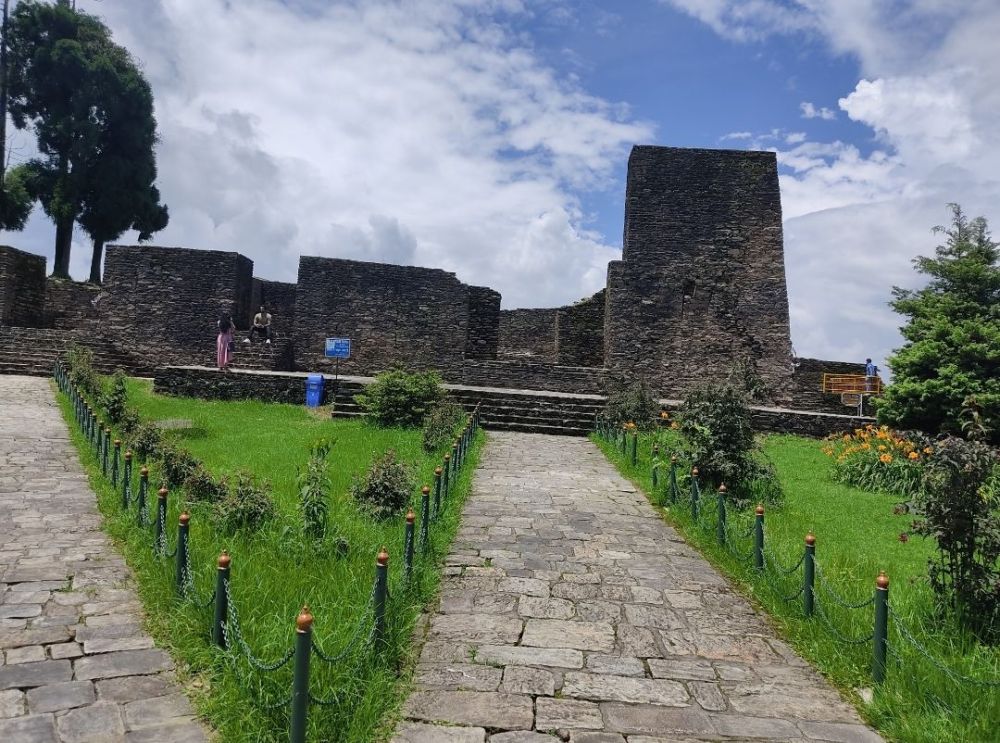

The small but captivating town of Pelling, located in the western part of Sikkim, is home to the ancient ruins of Rabdentse, which was once the proud capital of the kingdom of Sikkim. Tucked away in the folds of history and surrounded by lush greenery, the Rabdentse ruins draw history buffs and nature lovers alike to this serene destination in Northeast India.
Rabdentse served as the second capital of the Kingdom of Sikkim from 1670 to 1814 and had a strategic importance in shaping the region's history. The ruins, now lying amidst the sub-tropical forests, were discovered by British explorers after the Gurkha invasion, which led to the fall of the kingdom. Since then, the Rabdentse ruins have been a testament to the architectural prowess and the rich cultural heritage of the Sikkimese people.
The ruins were long forgotten until they were rediscovered and excavated by the Archaeological Survey of India (ASI) in the late 20th century. The ASI recognized Rabdentse Ruins as a national monument, and efforts were put in to restore and preserve this historical site. Consequently, Rabdentse has witnessed a steady growth in tourism, with visitors coming to marvel at the stone throne known as the 'Namphogang' from where the chogyals (kings) once governed, the chortens that dot the landscape, and the panoramic views of the Khangchendzonga ranges.
Visitors often begin their journey with a short trek through the dense forests from the nearby Pemayangtse Monastery, which adds an element of adventure to the experience. Interpretation boards installed by ASI at the site offer insights into the historical significance of the ruins. The tranquil environment coupled with the chirping of birds and the occasional rustling of leaves provide an almost spiritual experience for travelers visiting the ruins.
The Sikkimese authorities have recently been promoting sustainable tourism, with Pelling and the Rabdentse Ruins being no exception. This includes encouraging eco-friendly practices, maintaining the natural habitat around historical sites, and ensuring that tourism development benefits the local community. Efforts have also been made to include Rabdentse Ruins in various cultural tourism circuits which have led to an increased interest among tourists who want to explore the less-trodden paths of India's rich past.
Recent years have seen an emphasis on experiential travel, with tourists seeking immersive experiences. Local homestays, cultural programs, and nature walks are being developed to provide visitors with a holistic experience of Sikkim's culture, history, and natural beauty. The tourism trends also emphasize lesser environmental impact, and initiatives like banning plastic and implementing waste management systems are on the rise to ensure the preservation of sites like Rabdentse for future generations.
The immersive experience of delving into the past, coupled with the natural beauty and serene environment, makes a visit to the Rabdentse Ruins in Pelling a must for anyone interested in history, archaeology, or simply looking to find peace away from the bustling city life. As Sikkim continues to open its doors to the world, the Rabdentse Ruins stand as a proud emblem of its glorious past and a witness to the ever-evolving narrative of tourism in this picturesque Indian state.